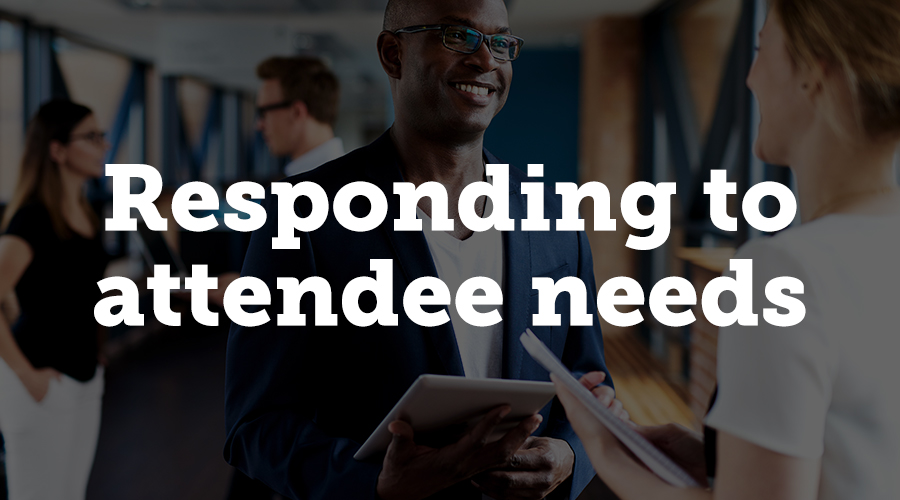3 Challenges Every Corporate Meeting Planner Must Overcome

Corporate events planners face similar challenges to association meeting planners, but there are also stark contrasts. I had the opportunity to sit down with Hillary Neumann, meeting and events coordinator at Celanese, to discuss these differences. She helped identify three challenges that every corporate meeting planner faces, and insights into how her team overcomes these challenges.
1. Buy-in from the executive team
Neumann surprised me when she said budgets aren’t a big challenge for her team. “We’re transparent and hold onto historical data,” she said. “We know where we are financially. The real challenge is getting everyone on the same page at the beginning of the process.”
Instead, wrangling the vision for each meeting from leaders is the biggest hurdle. Neumann says that understanding each stakeholder’s goals and being intentional about creating consistency among their ideas is of utmost importance.
Communicating what goes into meeting planning to those same stakeholders is also important. “Our team educates the executives on what our jobs entail,” says Neumann. “We send past budgets, potential costs, and outline processes very early on so each stakeholder has set expectations.”
Being a global company helps prevent sticker shock, but understanding the stakeholders’ goals and being transparent about costs and processes go the extra mile to win executive buy-in.
2. High-pressure, high-stress job requirements
Since event coordinators are ranked among the top ten most stressful jobs — right up there with corporate executives and police offers — it’s no surprise that Neumann mentioned the high-pressure nature of her job. While this is no different from association planners, Neumann’s workload is a bit higher than most. Her team plans 30-45 meetings per year and also assists with trade shows. They have 4 quarterly board meetings, many sales meetings, and multiple meetings throughout the year that bring departmental employees together as needs arise.
Neumann also notes the difference between what her team does and the requirements of a third party meeting planner. “Since we’re in-house our lead time is a lot shorter. We also have to serve our colleagues needs in real-time.”
Often, stakeholders will want last minute changes that trickle down from the highest executive levels. Despite having executive buy-in and educating stakeholders on the process, there are some things that simply need to be done.
“This is when I leverage the industry relationships I’ve curated,” says Neumann. “The events industry is relatively small, so it’s easy to meet people who can help out when needed.”
Neumann says it’s important to develop relationships with not only other planners and colleagues, but also vendors. A hotel, for example, may be more lenient on cut-off or cancellation times if they understand your business and the potential value you bring to them. Something like a last-minute cancellation can tarnish an organization’s name.
“Unless you’ve established who you are, and why there may be instances like this that arise,” says Neumann. “If you establish that relationship up front, you’ll be much better off.
3. Responding to attendee needs
Success for Celanese meetings is not measured by budget or a clear ROI data point. “The meetings are informative, and focused on strategy,” says Neumann. “Many aren’t sources of profit. Our meetings will stand regardless because there is an internal need for information to be communicated to a large, focused audience.”
As they say… the show must go on. Because of this, Neumann’s team is dedicated to ensuring the attendee experience is as comfortable as possible, and that attendees get what they need out of each event.
Neumann says her team monitors the room to see how attendees are reacting and adjusts accordingly. Once the meeting wraps up they talk with attendees to get a sense of how the event went and how they could do better next time.
Ultimately, this becomes part of that data set that they present to leaders at the beginning of the next event. What it really comes down to is implementing, learning, reacting, and adjusting.



